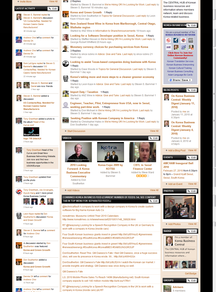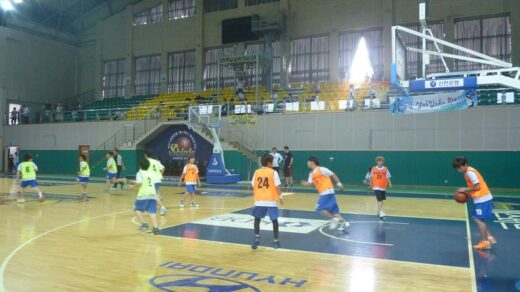When in Korea, you may find yourself having to get in line occasionally and there are a number of things you should know about Korean queuing practice in order to avoid problems.
Korea is a small country with a high population density, so the interpersonal distance that Koreans must encounter day to day and have become accustomed to is considerably smaller than that in America. (Take a look at a bus or subway train in rush hour, and you will see what I mean.) In America, on the other hand, it is uncommon to encounter such crowding and people naturally leave a much greater distance between themselves and others. Koreans behind you in a line can interpret the large distance between you and the person ahead of you in the queue to mean that you are not in the line or that you got in the line but are now preoccupied with something else and not going to move forward. A Korean in this situation would feel that they are justified in moving past you because, to them, you are obviously not in the line. To avoid being line-jumped by mistake, be sure to move every time the line does and try to maintain a smaller than normal distance. Take your cue for the appropriate distance (excuse the pun) from the others in the queue.
The above paragraph describes line-jumping based on misunderstanding, but deliberate line-jumping does occur in Korea on occasions. In America as in Korea, people will at times willingly allow others to move ahead of them in the line due to the circumstances of the person behind them, however, these Korean line-jumpers sometimes jump ahead on their own initiative and later justify it by saying things like, "I only have a very short transaction to do.", or "I am extremely busy.", or "I am running late for another appointment." You won't encounter this very often in Korea and for a short stay, probably never will. The majority of Koreans who witness such an incident would agree with you as they too hate these line-jumpers and they would take sides with a foreigner over a Korean line-jumper but, at the same time, would probably be reluctant to get involved. If you do ever find yourself in this situation, the best policy is to forget it and avoid making a scene.
In the US, if you have multiple service points but no barriers or signage to indicate that a single queue should be formed then the people getting in line often form a single line of their own initiative and the person at the head of the queue moves to the first service point that becomes available. Alternatively, if there are only a small number of people then there may be no line formed but people observe the order in which the others come and then respect that order when the next service point becomes available. Koreans don't generally follow this first-in-first-served principle and follow the "lottery" principle instead. If there are multiple service points then there will be multiple lines and each person who arrives must make a judgement as to which will be the fastest line. Sometimes your gamble pays off and sometimes it doesn't. Don't bother hovering around the back or trying to follow the order in which people arrived, choose a line to join and join it.
Banks and some other places have a ticket system to facilitate queuing. On entering, the first thing you need to do is locate the ticket machine, which can sometimes be hard to find. Take a number and then find a seat to wait for your number to be called. It is likely that each individual service point will display a number rather than having one central display, so you will have to watch all displays in order to keep track of the current number. Usually, a bell will sound and the display that has just changed will flash for a few seconds to allow people to see which display it is that has changed. It is important to realise that you have a very short time to get from your seat to the counter, so you have to anticipate your number being called and get to the counter quickly when it is. If you don't respond within a few seconds, the person at the counter will skip over to the next number. Three or four numbers can literally pass by in a matter of seconds. If several numbers have passed by in this fashion and your number has passed because you were too slow to respond and no-one has yet reached the counter, you may still go to the counter. Just show your ticket to the person behind the counter and you will be served. If you were too slow and the person with the number ahead of yours has reached the counter, stand a short distance behind this person, wait for him to complete his transaction and then show your ticket to the person behind the counter. You might encounter the situation where the person with the number behind yours has been a little too slow and has got to the counter before you even though their number has passed and your number has been called. As with the above situation, just stand a short distance behind him and wait for him to finish.
The person at the counter may motion with his or hand for you to come forward and this can cause some confusion to Americans. In America, to motion for someone to come towards you, you stick out your hand with your palm facing upwards and move your fingers backwards and forwards. This gesture means "come here" in Korea, too, but is only used with animals or infants and is considered very rude when used with adults. To be polite, the palm should face downwards when the gesture is used to adults. The problem is that the polite form of the gesture, with the palm facing downwards, can look remarkably like the gesture for go away that we use in the US. So, when in Korea, remember to use the polite form of the gesture (palm down) if you want to indicate that someone should come towards you and that a person who looks like he is indicating that you should go away is actually indicating that you should come towards him.



